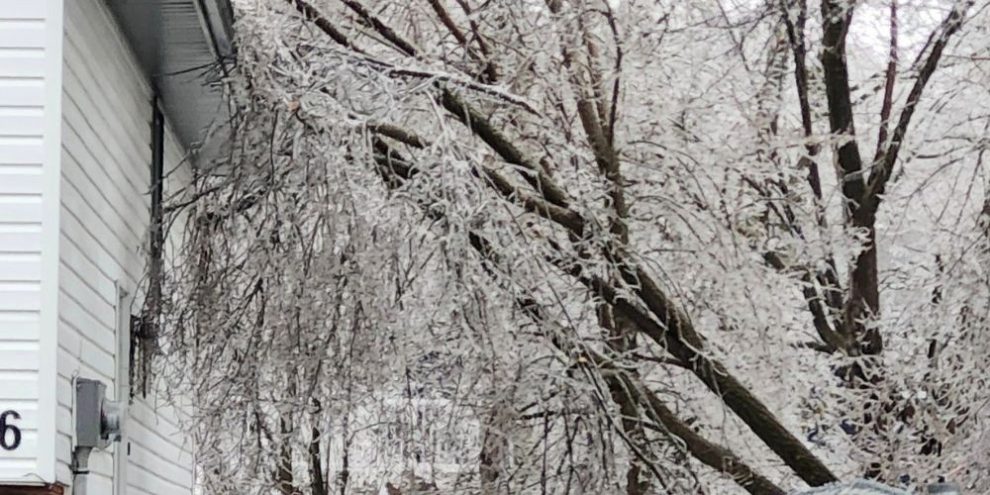
It’s Emergency Preparedness Week across Canada, and in Simcoe County, the message hits close to home.
Just a month ago, a severe ice storm swept through the region, toppling trees and hydro lines, cutting power, and isolating communities for days. Cleanup is still underway—and for many residents, the experience was a wake-up call.
“I woke up Sunday and neither my work nor home phone worked,” said Grant Durfey, the County’s manager of emergency management. “There was no cell signal either. People were literally in the dark.”
Durfey said the County received more than 200 reports of downed trees and branches across roads, and its waste sites reached their annual limit of brush within a single week. “We’re still cleaning up,” he added. “But the biggest takeaway from all of this is the importance of being prepared before disaster strikes.”
Why 72 Hours May Not Be Enough
For years, Canadians have been told to prepare for at least 72 hours of self-sufficiency in an emergency. But after the ice storm, Durfey says that message is evolving.
“We’re now recommending a week’s worth of supplies,” he said. “Power outages, road closures, and communication failures can stretch longer, especially in rural areas.”
Residents should think beyond the basics—food, water, batteries—and consider what their household would truly need for seven days: prescription medications, pet supplies, baby items, even cash if ATMs are down.
"A big one we saw during the ice storm," says Durfey, "was oxygen. If you have an oxygen generator at home ... that needs electricity to function, does it have a battery backup?
Storms, Tornadoes & Heat: Seasonal Threats to Watch
Simcoe County faces a range of seasonal hazards. Here’s how to prepare for the most likely ones:
Thunderstorms & Lightning
- If you can hear thunder, you’re close enough to be struck—head inside.
- Avoid sheltering under trees or overpasses.
- Unplug electronics to avoid power surges.
Tornadoes
- Have a plan to shelter in a basement or interior room.
- Keep emergency alerts on your phone or radio.
- Flying debris causes most injuries—stay low and away from windows.
- Don't shelter under an overpass. It might look convenient, keep you out of the rain, but that acts as a bit of a funnel and will speed up the wind going through or underneath.
Extreme Heat
- Stay hydrated and check on elderly or vulnerable neighbours.
- Know where your local cooling centre is located.
- Never leave pets or people in parked vehicles.
Barrie's News Delivered To Your Inbox
By submitting this form, you are consenting to receive marketing emails from: Central Ontario Broadcasting, 431 Huronia Rd, Barrie, Ontario, CA, https://www.cobroadcasting.com. You can revoke your consent to receive emails at any time by using the SafeUnsubscribe® link, found at the bottom of every email. Emails are serviced by Constant Contact
House Fires: Every Second Counts
Home emergencies can be just as dangerous as natural disasters. Durfey recommends every household take time to review basic fire safety:
- Ensure smoke and CO detectors are working on every floor.
- Keep a fire extinguisher handy—and know how to use it.
- Make a fire escape plan, and practice it. “Don’t just talk about it—walk through it,” says Durfey.
Communication Is Critical—And Vulnerable
One surprising lesson from the ice storm? Even cell service and internet aren’t guaranteed.
“People assumed they’d always have access to emergency alerts,” says Durfey. “But if towers go down, or your phone dies, that might not be the case.”
Consider keeping a battery-powered or hand-crank radio in your emergency kit, along with printed copies of emergency contacts and local information.
Preparedness Starts at Home—But We’re All In This Together
The County of Simcoe offers a range of resources at simcoe.ca/beprepared, including hazard maps, checklists, and planning guides.
Durfey encourages families to make preparedness a shared activity: “Make it a weekend project. Get the kids involved. The better prepared we are individually, the more resilient we’ll be as a community.”





